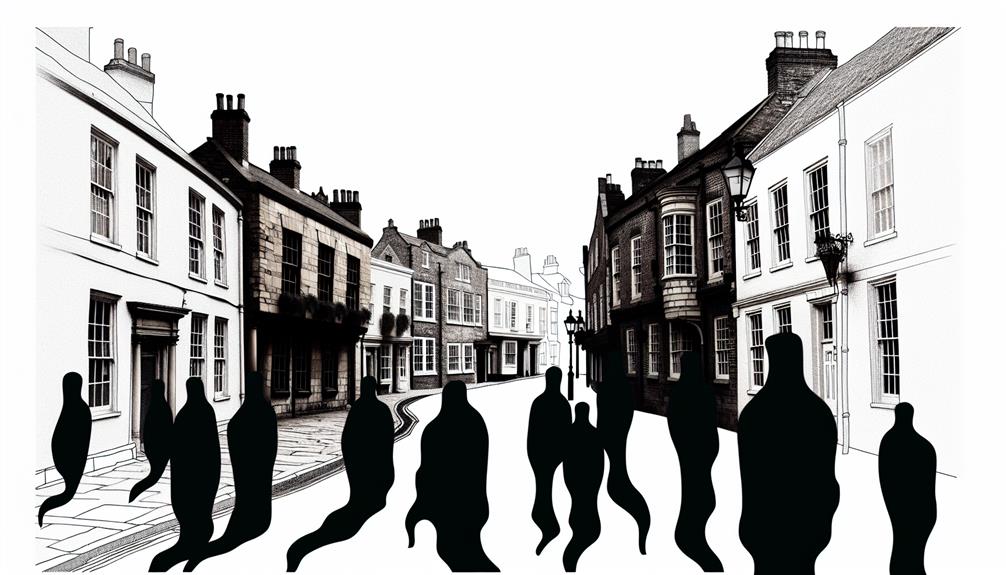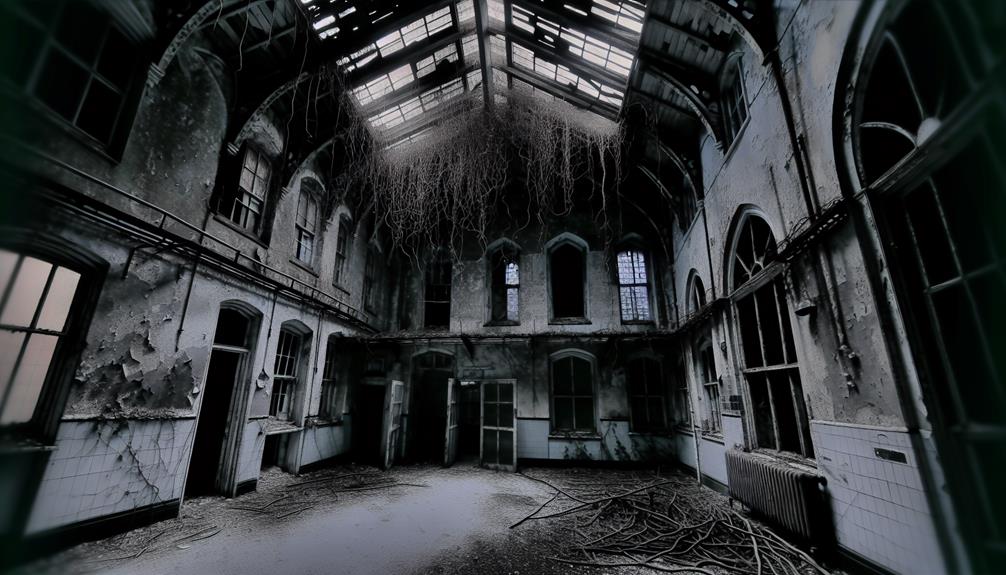Sobibor, a name etched in history for its silent testimony to Poland's darkest chapter, holds within its grounds a profound narrative of human suffering and resilience. The mere mention of this place evokes a sense of somber reflection on the depths of inhumanity that humanity can descend to. However, beyond the veil of despair, there lies a glimmer of hope, a tale of courage and defiance that challenges the very core of our understanding of the human spirit. Join in as we unravel the layers of Sobibor's haunting legacy and explore the intricate interplay between darkness and light within its confines.
Key Takeaways
- Sobibor: Witnessed unimaginable atrocities during the Holocaust.
- Camp's construction and operation shrouded in secrecy, highlighting human depravity.
- Tragic events unfolded with mass executions and gas chambers.
- Stories of survival and resistance showcase indomitable human spirit.
- Legacy preserved through memorials, education, and remembrance efforts.
Historical Background of Sobibor
Nestled in the remote forests of eastern Poland, Sobibor was one of the most notorious extermination camps established by Nazi Germany during World War II. Under the brutal Nazi occupation, Sobibor became a symbol of the unimaginable atrocities committed against humanity. It stood as a stark reminder of the depths of human cruelty and the resilience of the human spirit.
During its operation, Sobibor witnessed a tragic event that would go down in history as the Sobibor uprising. This courageous act was a demonstration of the unwavering spirit of the Jewish prisoners who refused to succumb to the dehumanization and brutality they faced daily. On October 14, 1943, led by Alexander Pechersky, a Soviet prisoner of war, around 600 Jewish inmates staged a daring revolt. They overpowered the guards, seized weapons, and attempted to escape. While many lost their lives during the revolt and subsequent manhunt, around 300 managed to break free from the camp.
The Jewish uprising at Sobibor serves as a poignant reminder of the strength and resilience of those who endured unimaginable suffering. It stands as a beacon of hope amidst the darkness of the Holocaust, showcasing the indomitable human spirit even in the face of extreme adversity.
Construction and Operation of the Camp
The construction and operation of Sobibor, the extermination camp located in eastern Poland, were meticulously planned and executed by Nazi authorities with the sole purpose of carrying out mass murder during World War II. The challenges faced during the construction phase were significant. The remote location of the camp posed logistical challenges regarding sourcing construction materials and manpower. Despite these obstacles, the Nazis managed to build the camp in a relatively short period, demonstrating the efficiency and ruthlessness of their operations.
Once construction was completed, the logistical operations of the camp were streamlined to maximize the efficiency of the mass murder process. Trains arrived regularly, transporting victims from various parts of Europe to Sobibor. Upon arrival, the victims were immediately separated, with the elderly, disabled, and children sent to their deaths in gas chambers. The able-bodied were temporarily kept alive to perform labor-intensive tasks before meeting the same fate as the others.
The operation of Sobibor was shrouded in secrecy, with strict orders from the Nazi high command to make sure that details of the camp's activities remained hidden. This clandestine approach, coupled with the isolated location of the camp, allowed the Nazis to carry out their atrocities with minimal external interference. The construction and operation of Sobibor stand as a chilling indication of the depths of human depravity during one of history's darkest chapters.
Tragic Events and Atrocities Unveiled
Revealing the heartbreaking truth behind the walls of Sobibor, a series of tragic events and unspeakable atrocities came to light, exposing the harrowing depths of inhumanity inflicted upon the victims during World War II. The impactful testimonies of survivors have shed light on the horrific conditions within the camp, where thousands of innocent lives were systematically extinguished through mass executions and gas chambers. These narratives serve as a solemn reminder of the atrocities committed and the enduring trauma experienced by those who managed to survive.
To emphasize the magnitude of the tragedy, the table below illustrates some of the harrowing realities faced by the prisoners at Sobibor:
| Atrocity | Description | Impact |
|---|---|---|
| Mass Executions | Victims shot en masse in open fields | Dehumanization |
| Gas Chambers | Used to exterminate thousands daily | Fear and Desperation |
| Inhumane Conditions | Overcrowded barracks, malnutrition, and disease | Physical and Mental Toll |
| Forced Labor | Prisoners subjected to grueling work under harsh conditions | Exhaustion and Suffering |
The haunting memorials erected at Sobibor stand as a tribute to the lives lost and a stark warning against the horrors of genocide. These somber monuments serve as a place of reflection and remembrance, ensuring that the tragic events that unfolded within the camp are never forgotten.
Stories of Survival and Resistance
Amidst the darkness of Sobibor's history, tales of resilience and defiance emerge, showcasing the indomitable human spirit in the face of unimaginable adversity. Survivor testimonies provide poignant accounts of courage and strength in the most harrowing of circumstances. These narratives serve as a tribute to the enduring human will to survive even in the bleakest of environments.
- Survivor Testimonies: The firsthand accounts of those who lived through the horrors of Sobibor offer invaluable insights into the experiences of individuals who faced unimaginable challenges.
- Acts of Defiance: Despite the overwhelming odds stacked against them, stories of resistance within the camp shed light on the bravery and determination of those who refused to succumb to despair.
- Collaborative Efforts: Underground resistance movements within Sobibor exemplify the power of unity and solidarity in the face of oppression. These acts of defiance, however small, helped maintain a sense of dignity and humanity amidst the dehumanizing conditions of the camp.
- Legacy of Hope: The stories of survival and resistance from Sobibor continue to inspire future generations to stand up against injustice and uphold the values of compassion and empathy. The enduring legacy of these individuals serves as a beacon of hope in the darkest of times.
Legacy and Remembrance of Sobibor
In commemorating the legacy and remembrance of Sobibor, it is vital to honor the resilience and memory of those who endured unimaginable suffering within its confines. The legacy of Sobibor serves as a poignant reminder of the atrocities committed during the Holocaust, emphasizing the importance of preserving the memories of the victims and survivors.
Memorial tributes play an essential role in guaranteeing that the lives lost at Sobibor are not forgotten. These tributes, whether in the form of monuments, ceremonies, or annual commemorations, serve as a way to honor the victims and educate future generations about the horrors of the Holocaust. By paying homage to those who perished at Sobibor, we acknowledge their suffering and reaffirm our commitment to never let such atrocities happen again.
Educational programs also play a significant role in preserving the legacy of Sobibor. Through initiatives that teach about the history of the camp, the stories of its victims, and the importance of tolerance and acceptance, we ensure that the lessons of Sobibor are passed down to future generations. By educating others about the events that took place at Sobibor, we aim to create a more compassionate and understanding society that rejects hatred and discrimination. In doing so, we honor the memory of those who suffered at Sobibor and work towards a future free from such atrocities.
Frequently Asked Questions
How Did the Local Community React to the Presence of Sobibor?
Local reactions to Sobibor varied within the community. Some individuals expressed support for its presence, viewing it as a necessary institution. Others were deeply disturbed by its existence, questioning the morality of such a place in their midst.
These conflicting sentiments highlighted the complex dynamics at play within the community, showcasing the range of emotions evoked by the proximity of Sobibor and the atrocities it represented.
What Efforts Were Made to Preserve Any Artifacts From Sobibor?
Efforts to preserve artifacts from historic sites like Sobibor are essential for honoring the memories of those affected.
Communities often rally to support such endeavors, recognizing the significance of these relics in bearing witness to past atrocities.
The preservation of artifacts not only serves as a tangible link to history but also as a solemn reminder of the importance of remembrance and education in preventing such tragedies from recurring.
Were There Any Attempts to Sabotage the Construction of the Camp?
There were indeed sabotage attempts and resistance efforts made during the construction of certain camps, including Sobibor. These acts were carried out by brave individuals who sought to disrupt the atrocities being planned and executed within the camp's walls.
The courage and determination displayed by those who resisted the construction of such places of horror serve as a proof to the human spirit's resilience in the face of unimaginable darkness.
How Did the Surviving Prisoners Adjust to Life After Sobibor?
Survivor stories from tragic events such as Sobibor reveal the enduring psychological impact on those who managed to escape the horrors of the camp. The journey towards adjusting to life after such trauma is a complex one, marked by a myriad of challenges.
While some find solace in sharing their experiences, others struggle with the haunting memories that linger. Coping mechanisms vary, but the resilience and strength exhibited by survivors are truly remarkable.
What Impact Did Sobibor Have on Nearby Towns and Villages?
The impact of Sobibor on nearby towns and villages was profound, affecting the local population in various ways. The atrocities committed at the camp left a lasting scar on the community, leading to feelings of grief, guilt, and collective trauma.
Over the years, efforts to remember and honor the victims have been made through memorial services, educational initiatives, and the preservation of historical sites. These remembrance efforts aim to guarantee that the horrors of Sobibor are never forgotten by future generations.
Conclusion
In the shadow of Poland's darkest chapter, Sobibor stands as a solemn statement to the depths of human depravity and the resilience of the human spirit. Through its historical background, construction, tragic events, and stories of survival, Sobibor's legacy serves as a powerful reminder of the importance of remembrance and honoring the victims.
As we work towards a future free from such atrocities, we must honor the victims of the past.


